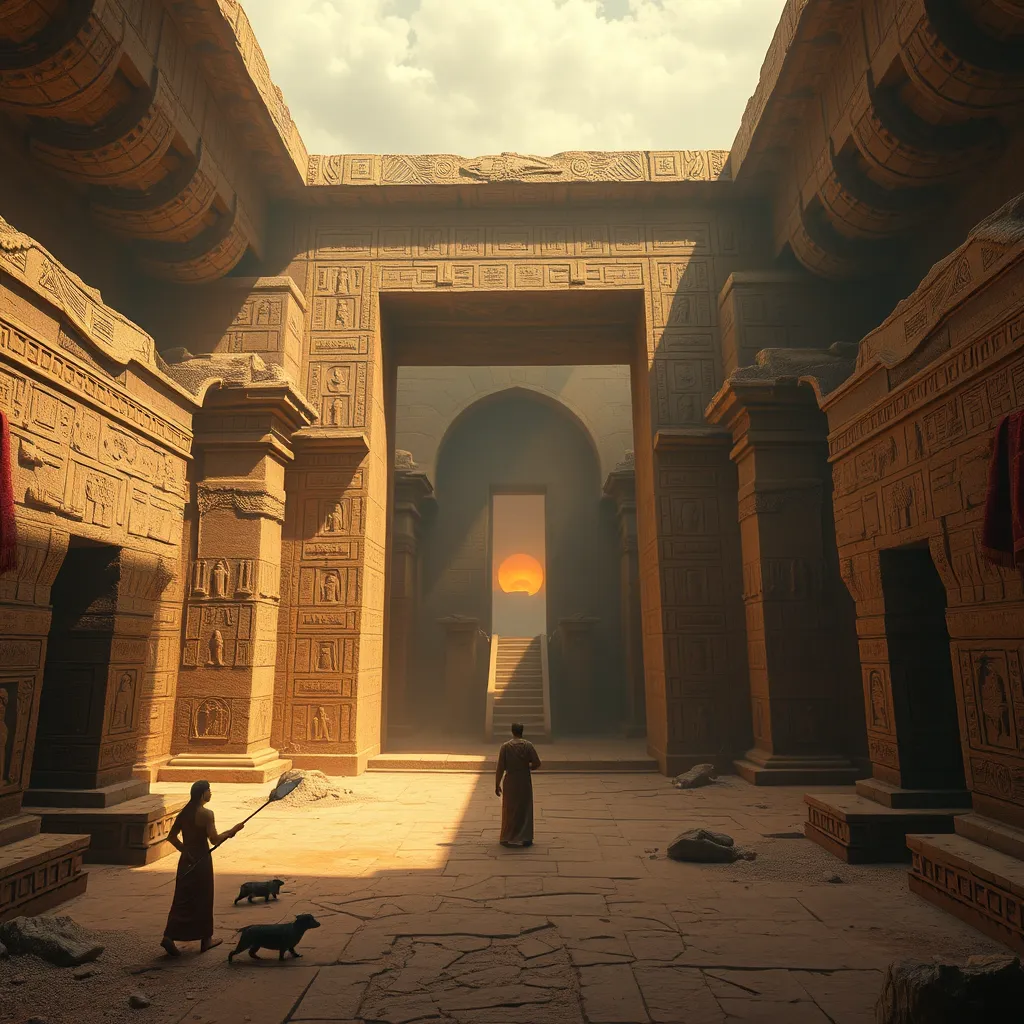The Duat: Where Souls Navigate the Afterlife
I. Introduction to the Duat
The Duat, in ancient Egyptian belief, refers to the realm of the afterlife, a complex and layered landscape where souls navigate the challenges of existence beyond death. This mystical dimension was of paramount importance in Egyptian mythology, serving as both a destination for the deceased and a reflection of their earthly lives.
In Egyptian thought, the afterlife was not merely a continuation of existence but a journey fraught with trials and tribulations. The Duat was envisioned as a place where the soul would face judgments, encounter deities, and ultimately seek a place in the eternal paradise known as the Field of Reeds.
II. Historical Context of the Duat
The concept of the Duat evolved significantly through various dynasties of ancient Egypt, reflecting changes in religious beliefs and societal values. Initially, it was seen as a dark, chaotic place, but over time, it transformed into a structured realm with defined roles for deities and a more optimistic view of the afterlife.
Key texts and artifacts referencing the Duat include:
- The Pyramid Texts, which date back to the Old Kingdom, provide some of the earliest descriptions of the Duat.
- The Coffin Texts expanded upon these ideas during the Middle Kingdom, offering more detailed guidance for the deceased.
- The Book of the Dead, prevalent in the New Kingdom, served as a guide for the soul’s journey, including spells and instructions for navigating the Duat.
III. The Structure of the Duat
The Duat is often depicted as a vast and intricate structure consisting of several realms or layers, each presenting different challenges and opportunities for the soul. Major geographical features within the Duat include:
- The Lake of Fire: A treacherous body of water that souls must cross, symbolizing purification.
- The Fields of Iaru: A paradisiacal expanse that represents eternal peace and abundance for the worthy souls.
- The Hall of Judgment: The critical location where souls face their ultimate fate through the weighing of the heart.
These features not only served as part of the soul’s journey but also held deep symbolic meanings, often reflecting the moral and ethical standards upheld in ancient Egyptian society.
IV. Deities and Entities of the Duat
Within the Duat, various deities and entities play vital roles in guiding or challenging the souls. Key figures include:
- Osiris: The god of the afterlife, who symbolizes resurrection and regeneration, overseeing the judgment of souls.
- Ma’at: The goddess of truth and justice, embodying the moral order of the universe and the principles against which souls are judged.
- Anubis: The jackal-headed god who presides over mummification and the protection of the souls as they navigate the Duat.
These deities, among others, interact with the souls, either providing assistance or presenting challenges that test their worthiness for eternal life.
V. The Journey of the Soul
The journey of the soul begins with death, when the individual’s spirit separates from the physical body. This departure is often marked by rituals intended to ensure a safe passage into the Duat. Key stages in navigating the Duat include:
- Crossing the Threshold: The soul must pass through the gates of the Duat, each guarded by formidable beings.
- Encounters with Divine Beings: Souls may meet various gods and goddesses who offer guidance or present obstacles.
- The Weighing of the Heart: The ultimate test of the soul’s morality and worthiness.
Throughout this journey, the soul must demonstrate its adherence to Ma’at, the principles of truth and justice.
VI. The Weighing of the Heart
The weighing of the heart is one of the most significant rituals in the Duat, symbolizing the judgment of the soul. Conducted by Osiris, the process involves placing the deceased’s heart on one side of a scale, with a feather representing Ma’at on the other. The implications of this judgment are profound:
- Heart Heavier than the Feather: If the heart is heavier, it signifies a life of wrongdoing, leading to the soul’s consumption by the monster Ammit.
- Heart Lighter or Equal: A balanced scale indicates a life of virtue, allowing the soul to continue to the Field of Reeds.
This judgment process underscores the importance of ethical living and the belief that one’s actions in life directly affect their fate in the afterlife.
VII. Symbolism and Art in the Duat
The Duat’s representation in art and literature is abundant, with numerous artistic depictions found in tombs and papyri. These representations serve to illustrate the journey of the soul and the challenges it faces. Significant aspects include:
- Hieroglyphs and Inscriptions: Often used to convey spells and messages meant to guide the deceased through the Duat.
- Paintings and Reliefs: Artistic depictions of the Duat’s landscapes, deities, and the judgment process are common in tombs, aiming to provide comfort and assurance.
Symbols like the ankh (representing life) and the scarab (symbolizing rebirth) are frequently featured, reinforcing the themes of resurrection and eternal life.
VIII. The Duat’s Legacy in Modern Culture
The legacy of the Duat continues to influence contemporary interpretations of the afterlife. Modern literature, film, and popular media often draw inspiration from ancient Egyptian mythology, portraying the Duat as a place of mystery and adventure. Examples include:
- Literature: Novels like “The Kane Chronicles” by Rick Riordan reimagine the Duat and its deities for a modern audience.
- Film: Movies such as “Gods of Egypt” depict the Duat’s mythology, blending ancient themes with contemporary storytelling.
- Video Games: Titles like “Assassin’s Creed Origins” incorporate elements of the Duat, allowing players to explore its rich mythological background.
This continued fascination with the Duat reflects humanity’s enduring quest to understand life, death, and what lies beyond, connecting ancient beliefs with modern existential inquiries.




